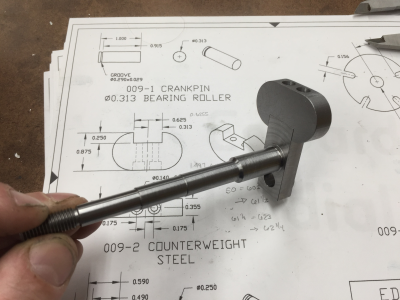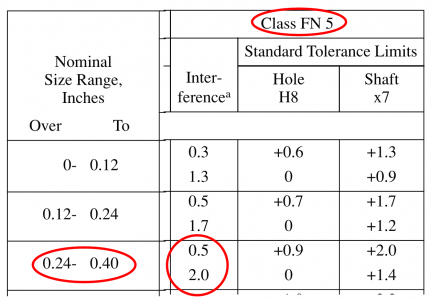- Joined
- Mar 9, 2018
- Messages
- 465
I'm working off a set of drawings for my Edwards Radial 5 build.
The crankshaft calls for a 0.313" pin (the crank pin that the big-end bearing rides on) to be press-fit into a hole specified as having a diameter between 0.3108 and 0.3113 inches.
That equates to an interference between 1.7 and 2.2 thousandths.
My understanding is that the 'rule of thumb' for press fits is about 0.001 per inch of bore.
The specified interference is more than 6 times that rule of thumb value (6.3 thou per inch of bore as opposed to 1 thou).
Is that too much interference?
I've got a 3-ton arbor press, so I ought to be able to physically press it in, but is it going to put undue stress on the web of the crankshaft or anything like that?

The crankshaft calls for a 0.313" pin (the crank pin that the big-end bearing rides on) to be press-fit into a hole specified as having a diameter between 0.3108 and 0.3113 inches.
That equates to an interference between 1.7 and 2.2 thousandths.
My understanding is that the 'rule of thumb' for press fits is about 0.001 per inch of bore.
The specified interference is more than 6 times that rule of thumb value (6.3 thou per inch of bore as opposed to 1 thou).
Is that too much interference?
I've got a 3-ton arbor press, so I ought to be able to physically press it in, but is it going to put undue stress on the web of the crankshaft or anything like that?



